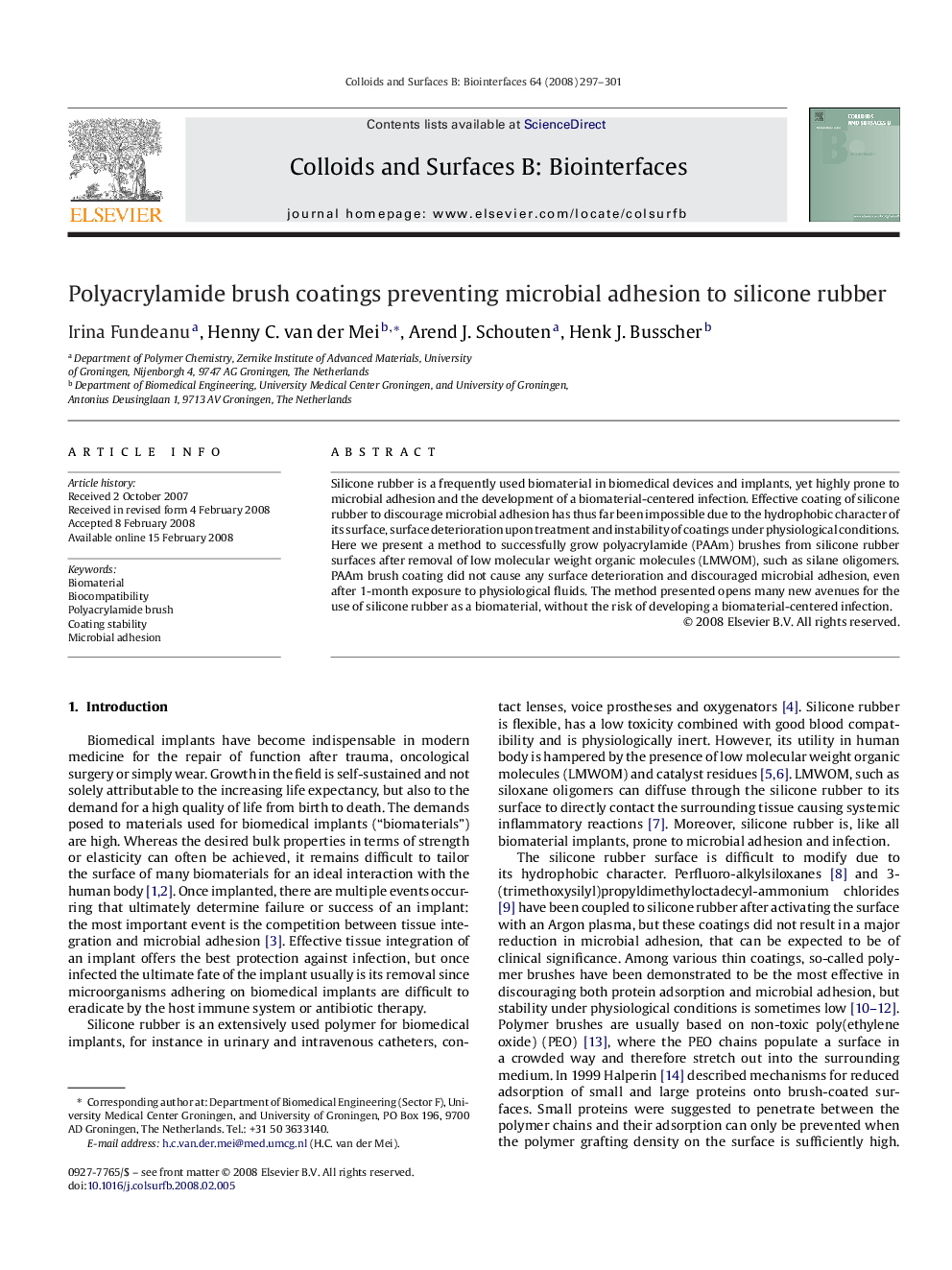| Article ID | Journal | Published Year | Pages | File Type |
|---|---|---|---|---|
| 602242 | Colloids and Surfaces B: Biointerfaces | 2008 | 5 Pages |
Silicone rubber is a frequently used biomaterial in biomedical devices and implants, yet highly prone to microbial adhesion and the development of a biomaterial-centered infection. Effective coating of silicone rubber to discourage microbial adhesion has thus far been impossible due to the hydrophobic character of its surface, surface deterioration upon treatment and instability of coatings under physiological conditions. Here we present a method to successfully grow polyacrylamide (PAAm) brushes from silicone rubber surfaces after removal of low molecular weight organic molecules (LMWOM), such as silane oligomers. PAAm brush coating did not cause any surface deterioration and discouraged microbial adhesion, even after 1-month exposure to physiological fluids. The method presented opens many new avenues for the use of silicone rubber as a biomaterial, without the risk of developing a biomaterial-centered infection.
